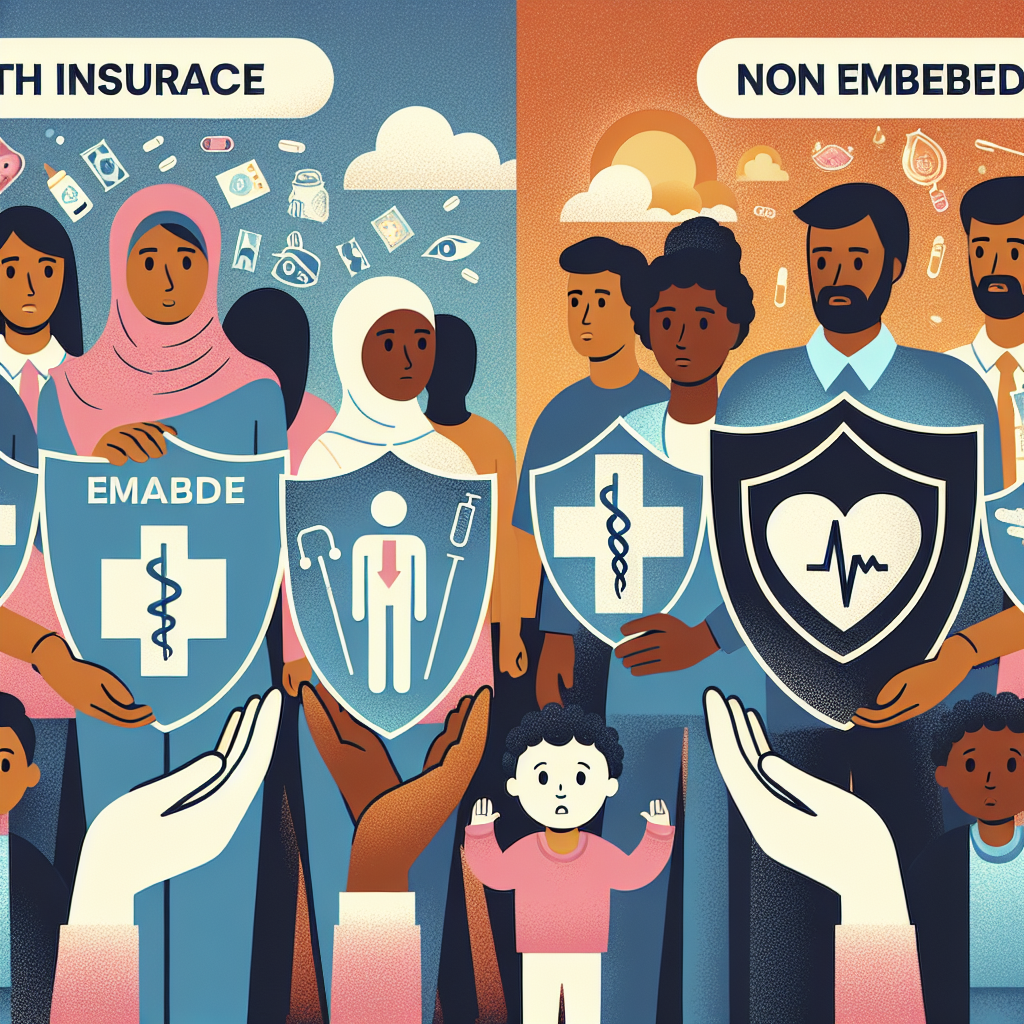Filed under Health Insurance on
Embedded vs Non-Embedded Health Insurance Explained

When navigating the complex world of health insurance, it can often feel overwhelming with the numerous terms and choices available. One of these choices includes deciding between an embedded and a non-embedded health insurance plan. Understanding the differences between these two can aid in selecting a plan that best suits your healthcare needs and financial situation. In this article, we will delve into the specifics of embedded vs. non-embedded health insurance, providing practical insights to make this critical decision easier.
Understanding Embedded Health Insurance
Embedded health insurance refers to a health insurance policy where the deductibles and out-of-pocket maximums are divided for each individual within a family plan. Essentially, each family member has their own deductible and out-of-pocket maximum, although the plan still includes a family-wide limit.
This type of plan can be particularly beneficial for families. For instance, if one family member incurs substantial medical expenses, they aren't necessarily required to meet the family’s entire deductible before receiving plan benefits—only their individual deductible. Once an individual’s deductible is met, the insurance company begins to cover their eligible medical expenses according to the plan’s terms, even if the family deductible hasn’t been reached.
Real-Life Example of Embedded Health Insurance
Consider the Smith family with a health insurance plan featuring an embedded deductible of $3,000 for individuals and $6,000 for the family. Suppose their daughter, Jane, breaks her arm, and their son, Mike, requires minor outpatient surgery later in the year. After Jane’s expenses reach her individual deductible of $3,000, her further covered medical costs are paid by the insurer, irrespective of whether Mike" has met his own deductible or not.
Within this setup, if one family member is likely to incur high medical costs, an embedded plan can offer more immediate financial relief.
Exploring Non-Embedded Health Insurance
Non-embedded health insurance, by contrast, applies one collective deductible and out-of-pocket limit to the entire family. This means that the family deductible has to be met through combined expenses before any benefits begin to pay for eligible medical expenses.
This type of policy could be advantageous if the member expenses are spread more evenly across family members rather than concentrated in one individual. The plan’s structure means every dollar goes toward meeting the shared deductible, which could offer savings if several members incur smaller medical costs.
Real-Life Example of Non-Embedded Health Insurance
Imagine the Johnson family has a non-embedded plan with a $6,000 family deductible. Throughout the year, both parents and their two children incur modest medical costs for regular check-ups, prescriptions, and occasional treatments. In this scenario, with every family member’s expenses contributing toward the $6,000, the deductible might be met sooner, activating the policy’s coverage for the remaining family medical expenses.
For families where medical needs are distributed relatively evenly, a non-embedded plan could maximize efficiency in reaching the deductible.
Key Differences Between Embedded and Non-Embedded Health Insurance
Understanding the differences between these two types of insurance can be critical in selecting the right one for your family. Let's look at some key distinctions:
- Cost-sharing: Embedded plans allow individuals to meet their own deductibles, whereas non-embedded plans require the entire family to meet one combined deductible.
- Financial predictability: Embedded plans can be more predictable financially, as a single high-cost individual won’t need to fulfill the total family deductible.
- Family dynamics: The choice between plans might depend on expected medical needs. If expenses are likely to be skewed towards one person, embedded might be better.
Choosing the Right Plan for You
Deciding between embedded and non-embedded health insurance doesn’t have to be daunting. Consider your family’s health needs, budgeting priorities, and past medical expenses. Review factors such as who in the family typically requires more medical care and the likelihood of unforeseen medical scenarios occurring.
Discuss with a licensed insurance advisor who can help model different scenarios and explain the intricacies of each plan type. They can help predict how each plan might play out over a typical coverage year, enabling you to make an informed decision.
Practical Advice for Selection
- Assess Medical History: Examine past medical expenditures and identify if particular family members have consistent or high-cost health needs.
- Look at Family Trends: Consider anticipated life events (e.g., a new baby, surgeries, or typically high medical expenditures like frequent specialist visits).
- Evaluate Financial Impact: Run hypothetical scenarios for both embedded and non-embedded plans to determine potential cost savings.
Making a choice aligned with your family’s health dynamics and financial capabilities can help optimize benefits from your health plan.
Frequently Asked Questions
What is the primary benefit of an embedded health insurance plan?
The primary advantage of an embedded health insurance plan is that it allows individual family members to meet their personal deductible, independent of the rest of the family. This can be beneficial if one person anticipates greater healthcare needs, as it reduces the financial burden of meeting a larger family-wide deductible.
How does a non-embedded health insurance policy work for family expenses?
In a non-embedded policy, all family members' medical expenses contribute to fulfilling one overall deductible. This means every dollar spent by any family member goes towards reaching the collective family deductible, promoting cost-sharing across all covered members.
Which families might prefer a non-embedded plan?
Families with evenly distributed health expenses might find a non-embedded plan beneficial, as it allows every member’s expenses to contribute collectively to a shared deductible. Though no one person has their own deductible, the family's aggregated spending can more efficiently reach the plan's threshold.
Are embedded plans typically more expensive than non-embedded plans?
Not necessarily. Whether an embedded plan is more expensive will depend on the specific offers and structure of the plan set by insurers. It is crucial to compare individual premiums and out-of-pocket limits during enrollment periods.
Can I switch between embedded and non-embedded insurance plans if my needs change?
Switching plans typically occurs during open enrollment or qualifying life events. It’s important to assess plans during these times, as changes in your family’s medical needs might make switching beneficial. Consult with your insurance provider or a health insurance advisor for guidance.
Understanding the intricacies of embedded vs. non-embedded health insurance empowers you to make well-informed decisions. By considering your family's specific needs, you can optimize your healthcare coverage and ensure financial peace of mind.




